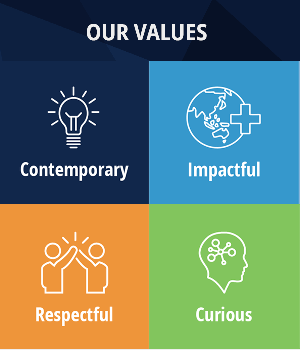Construction and engineering businesses that adopt and successfully implement digital technology have the potential to boost their yearly revenue by over 50%, according to a Deloitte report.
It finds embracing technology is a crucial factor in turning challenges into high revenue growth.
“The use of each additional technology is associated with a 0.58 percentage point increase in expected revenue each year for the average business. For a business with $100 million turnover, increasing technology adoption could be worth an additional $580,000 in additional revenue per year,” it writes.
The report states adopting new technology is a main source of revenue growth for 61% of businesses.
Benefits to technology adoption
- 96% of businesses reported increased performance, with 45% rating the impact as ‘high’ or ‘very high’
- 48% of businesses see new technologies improving internal business processes as a source of growth
- 34% of businesses experienced increased productivity
- 33% had improved customer service
- 33% increased staff safety
Perth re-manufacturer R. Moore & Sons (RMS) is one business that is embracing technology by digitising its workshop.

R. Moore & Sons General Manager Stuart Davis.
With more than 100 years of innovation, General Manager Stuart Davis says RMS is seeing the benefits of its digital transformation.
“We started off working using sensor technology to improve our preventative machine maintenance program and then, when we mentioned wanting to transform our manual shop floor scheduling, we had a digital solution custom-created,” he says.
“The Smart Shop Floor app has completely overhauled the way we work and has increased real-time shop floor visibility in a very powerful way. But we started very slowly, ensuring the system was watertight before rolling it out across our seven departments.”
Davis says the business can now make data-informed decisions, leading to increased productivity and efficiency, and improved customer experience.
RMS customers can log into an online portal to see live updates on their job, including its current status and when it is due to return to them. Customers can also communicate to RMS through the app and talk to the supervisor on any related matters, as well as access photos and reports.
Barriers to adopting technology
The report finds increasing technology adoption in the construction and engineering sectors requires addressing three common adoption barriers:
- 44% have a lack of digital skills among staff
- 41% are uncertain about the required skills
- 41% have a lack of budget allocated
Previous research indicates Australia has a major gap in digital skills across its workforce, with 87% of jobs now requiring digital literacy skills, yet digital literacy is the second highest (24%) skills gap reported by employers after data analysis (30%).
This prevalence of digital skills shortage poses a major challenge for the construction and engineering industries as they are competing with other sectors for these in-demand skills.
However, businesses can implement several initiatives to boost their digital skills base, and the Deloitte report finds many construction and engineering businesses, like RMS, are being proactive.
Training and strategy can help overcome barriers
To help overcome barriers, organisations can train existing employees, recruit new talent, outsource tasks or partner with other organisations – or a combination of these solutions. However, these solutions are not without challenges.
“Providing effective training to staff increases the likelihood that digitisation will have a notable impact on business performance. Over half (57%) of businesses with staff that perceive their training as useful also experienced a high or very high impact of digitisation, compared to only 21% of businesses with staff who did not perceive their training as useful,” the report states.
Businesses that offer training invest more in new technology, as those who offered direct training invested 21% of revenue on digital technology. Whereas offering self-paced learning invested 16%, compared to 11% of investment by those offering no training.

“Businesses can reduce this barrier by developing an awareness of existing technologies and digital trends in other construction and engineering businesses in order to expand digital activity,” the report states.
Smaller businesses may find this more difficult due to limited resources, but utilising technical specialists to develop an understanding can help and there may be government or other support available.
Strategy is also important in reducing barriers, the report states, “to set goals to progressively build digital capabilities within specified timelines alongside allocated funding”.
An organisation-wide strategy is directly linked to innovation as businesses with a strategy are twice as likely to introduce some form of new innovation, such as a new product or service or changing an internal process.
RMS – a business with about 60 staff – understands embracing technology comes with ongoing challenges and Davis is sure to make it clear to his team that “teething issues” are just part of the process.
“As we move forward with each step, we’re going to try new things and not all of them will work. Some of them were very clunky at the start and then we fine-tuned things more and more to a point where it’s working well,” he says.
“So, we made sure throughout the journey that we stopped and reflected on where we were six months ago compared to where we are now. I know the problems that today are really frustrating, but if we just think back to where we were, it just resets our thinking and we realise how much progress we have made.”
To be part of WA’s peak business organisation, get in touch via 1300 422 492 or [email protected].












